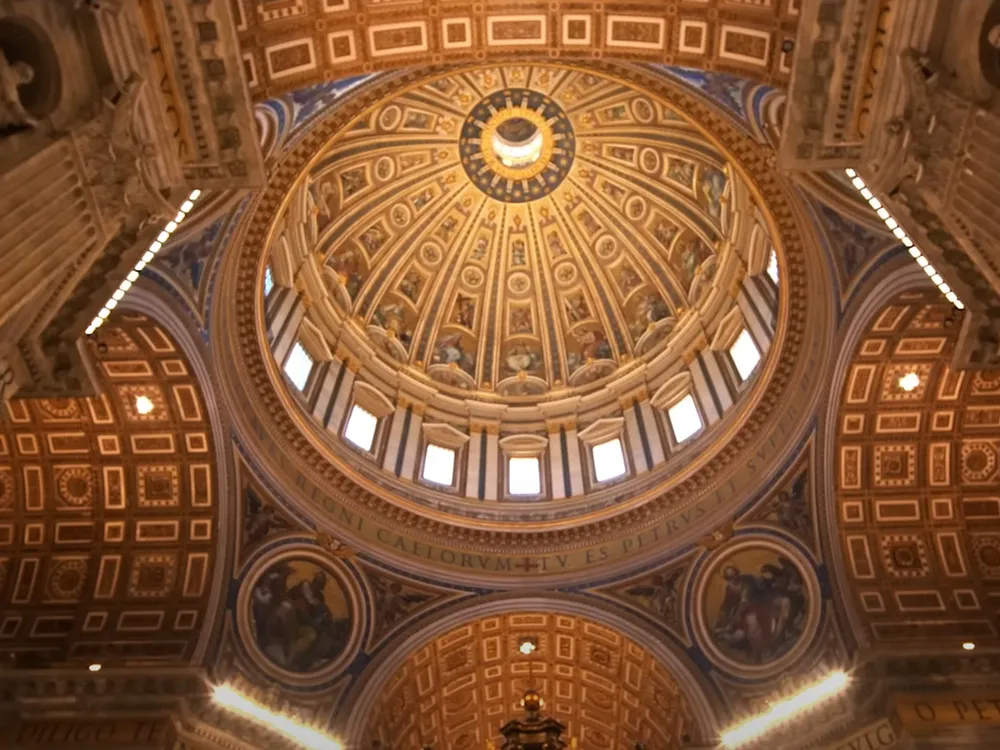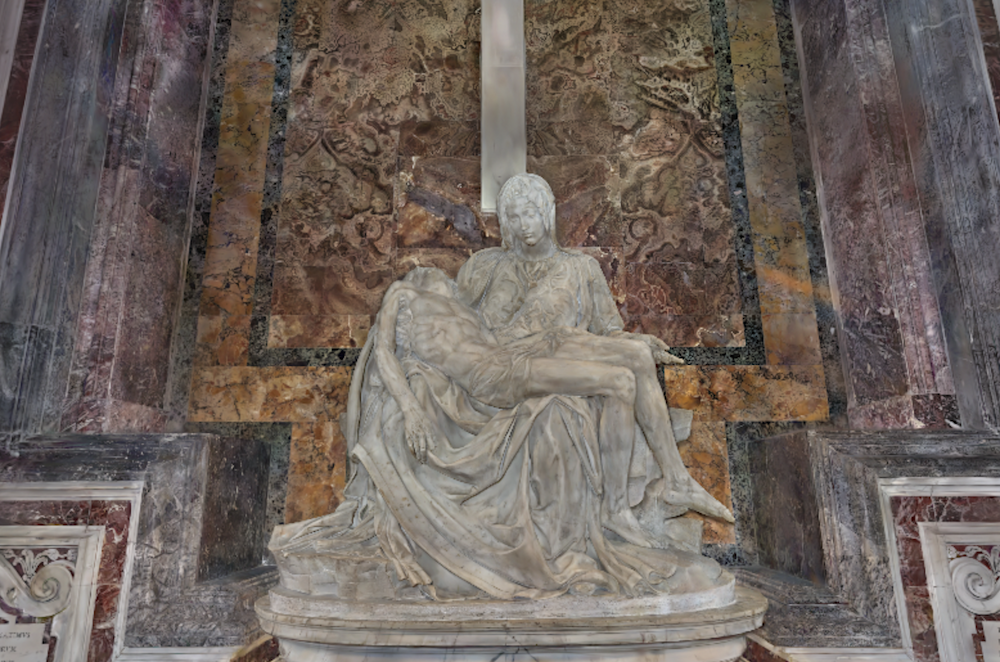
In the trailer below for the world’s first 3D replica of St. Peter’s Basilica, Yves Ubelmann speaks of using “AI for Good,” which isn’t just an ideal, but also the name of a lab at Microsoft. Microsoft and Ubelman’s digital-preservation company Iconem were two of the participants in that ambitious project, along with the Vatican itself. Pope Francis, writes AP’s Nicole Winfield, “has called for the ethical use of AI and used his annual World Message of Peace this year to urge an international treaty to regulate it, arguing that technology lacking human values of compassion, mercy, morality and forgiveness were too great.”
What better show of good faith in the technology than to allow AI to be used to bring the center of the faith Pope Francis represents to the world? In the nearly 400 years since its completion, of course, the world has always come to the current St. Peter’s Basilica, and will continue to do so.
The 3D-replica project “has been launched ahead of the Vatican’s 2025 Jubilee, a holy year in which more than 30 million pilgrims are expected to pass through the basilica’s Holy Door, on top of the 50,000 who visit on a normal day,” Winfield writes. But no matter where in the world you happen to be, you can virtually enter St. Peter’s Basilica right now, and spend as long as you like, admiring the basilica itself, the cupola, Bernini’s St. Peter’s Baldachin, and Michelangelo’s Pietà, among other features.

However important (and attention-drawing) artificial intelligence was as a tool in the creation of this ultra-precise “digital twin” of St. Peter’s Basilica, the four-week process of capturing every detail of the real structure that could be captured also necessitated the use of drones, lasers, and cameras taking more than 400,000 digital photos. The “AI for Good Lab contributed advanced tools that refined the digital twin with millimeter-level accuracy, and used AI to help detect and map structural vulnerabilities like cracks and missing mosaic tiles,” says Microsoft’s site. “The Vatican oversaw the collaboration, ensuring the preservation of the Basilica as a cultural, spiritual, and historically significant site for years to come.”

It makes a certain sense to apply the highest technology of our time for the benefit of a building known as the greatest architectural marvel of its time. But in order to better appreciate the kind of knowledge that will be revealed by the 22 petabytes of information that went into the digital model (which offers its own guided tour) we’d do well to immerse ourselves first in what was already known about St. Peter’s Basilica. For a brief introduction to the conception and evolution of this grand church as it stands today, we could do much worse than architecture-and-history YouTuber Manuel Bravo’s video “St Peter’s Basilica Explained.” If you watch it, don’t be surprised if you find yourself tempted to engage in prolonged exploration of the model — or indeed, to book a visit to the real thing. Enter the digital St. Peter’s here.
Related content:
Rome Reborn: A New 3D Virtual Model Lets You Fly Over the Great Monuments of Ancient Rome
Based in Seoul, Colin Marshall writes and broadcasts on cities, language, and culture. His projects include the Substack newsletter Books on Cities and the book The Stateless City: a Walk through 21st-Century Los Angeles. Follow him on Twitter at @colinmarshall.


Leave a Reply